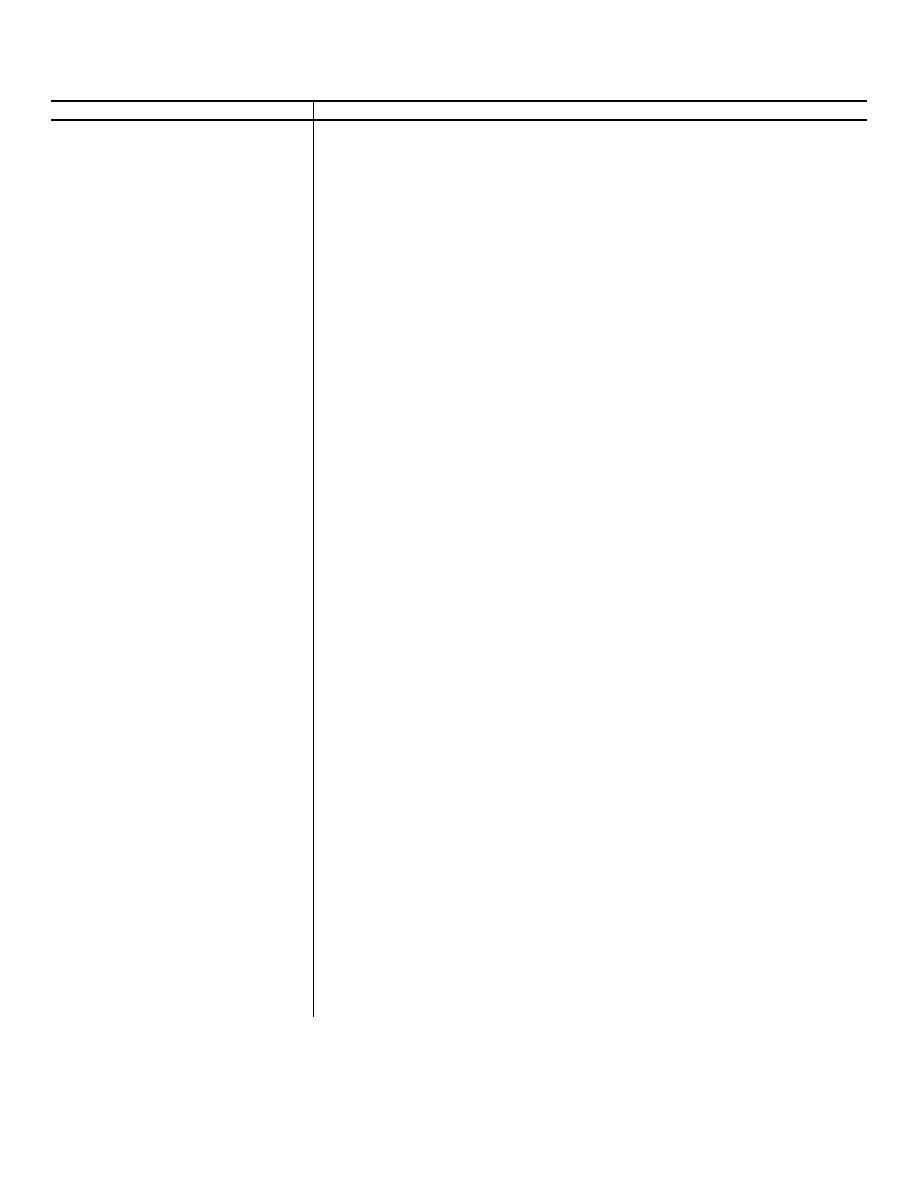
TM 11-6625-214-12
Table 3-1. Operating Controls and Indicators for AN/URM-52(*)
Control, indicator or connector
Function
Power ON/OFF switch
When in ON position, power is applied to electronic circuits of signal generator. When in
down, or OFF position, power is applied to space heaters in cabinet to dehumidify
interior of signal generator when not in use.
POWER indicator
When on, HEATER indicator will be off. This indicates that power is applied to electronic
circuits of signal generator and removed from space heaters.
HEATER indicator
When on, POWER indicator will be off. This indicates that power is applied to space
heaters and removed from electronic circuits.
Signal frequency control and MEGA- dial
Used to adjust klystron oscillator to desired frequency. This frequency is MEGA CYCLES
CYCLES dial
dial above control. A continuously rotatable vernier scale graduated from 0 to
100 is provided on control itself so that accurate resetting to a specific frequency can
be made.
ZERO SET control
Used to adjust needle of DBM/POWER SET meter to zero position when MOD
SELECTOR switch is in OFF position.
POWER SET control
With MOD SELECTOR switch in CW position, used to adjust needle of DBM/POWER
SET meter to 0 dbm (red line at center of scale) prior to adjusting attenuation. It also
operates transparent index window over OUTPUT ATTEN. (attenuator) dial to
establish the reference level for reading attenuator dial.
OUTPUT ATTEN. (attenuator)l
Determines radiofrequency output level of signal generator. It also operates output
control and dial
output attenuator dial so that reading of this dial (under index line) indicates output
level of signal generator, in terms of describes below 1 milliwatt.
DBM/POWER SET meter
Indicated reference leve l from which output power level is calibrated.
FM AMPLITUDE control
Adjusts deviation (frequency swing) of output frequency from center frequency when
frequency modulation is employed.
MOD SELECTOR switch
Provides the following functions:
EXT FM. External sine or sawtooth voltage may be applied to EXT MOD input connector
to provide frequency modulated output. INT FM. Frequency modulated rf voltage is
provided at output. When SYNC SELECTOR switch is set to X1/PPS MUX 1 or
X10/PPS MUX 10, these pulses are initiated by internal pulse generating circuits of
signal generator, and recurrence rate of frequency deviation is indicated by PULSE
RATE control multiplied by setting of SYNC SELECTOR switch. AT start of each
recurring frequency variation, a synchronizing pulse if provided at SYNC
AMPLITUDE control.
CW. Output is a continuous wave of radio frequency voltage.
OFF. Rf oscillator is biased off so that no rf output is provided. Permits
DBM/POWER SET meter to be zero set before each test by adjustment of ZERO
SET control.
NOTE
may be instantly operative when this switch is moved to one of its other positions.
INT. Pulse repetition frequency is determined by internal synchronizing circuits and
is indicated by position of PULSE RATE control, when SYNC SELECTOR switch is
set to X1/PPS MUX 1. When SYNC. SELECTOR is set X10/PPS MuX 10, pulse
rate will be 10 times rate indicated by PULSE RATE control. When MOD
SELECTOR switch is set to INT and SYNC SELECTOR switch is in one of the three
most counterclockwise positions, internal pulse generating circuits may be
synchronized from an external source of voltage.
EXT+. Signal generator may be modulated by positive external pulses of voltage
applied to EXT MOD connector on front panel.
JEXT - . Signal generator may be modulated be negative pulses applied to EXT
MOD connector on front panel.
SQ WAVE. Provides output of rectangular pulses closely approaching a square
wave at 1,000 Hz. Repetition rate of these pulses is determined by PUSLE RATE
control and by setting of SYNCH SELECTOR switch (X1/PPS MUX1 or X10/PPS
MUX 10 position) over range of 40 to 4,000 pulses per second. The on time will be
approximately equal to off time. At start of each cycle of square wave, a
synchronizing pulse is provided at SYNCH.OUT connector.
PUSLE WIDTH control
Determines time duration of rf pulse when MOD SELECTOR switch is set to INT Time
duration is adjustable from 0.5 to 10 microseconds.
PULSE DELAY control
Determines time delay between start of synchronizing pulse and start of radiofrequency
output pulse, regardless of type of synchronization employed. Control permits
insertion of delays from 3 to 300 microseconds following synchronizing pulse. This
same delay will be present between pulses appearing at SYNC OUT connector and
DELAYED SYNC OUT connector on front panel. Output from either connector may
be employed for synchronizing external equipment.
3-5

